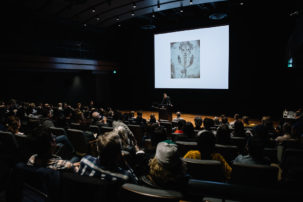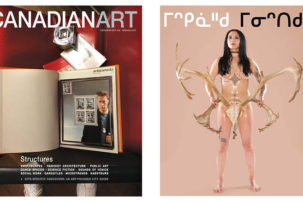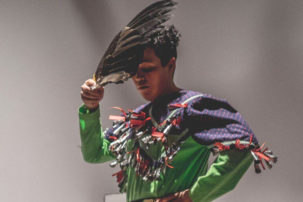Stanzie Tooth is a painter and curator at the Lonsdale Gallery, a contemporary art space in Toronto. Her work has been exhibited at numerous venues in Toronto and Kingston, including a solo show at the Ministry of Health Building. She graduated from the Ontario College of Art and Design University (OCAD) in 2007 with an award of distinction for excellence in painting.
I started at OCAD just before I turned 18. I had a really strong theatre background and I thought that maybe I’d go into set design or set painting. I knew that—no matter what—I wanted to become better at my craft and to be in a place where I was part of the art community downtown.
I’ve always been an artist who’s interested in community projects, in organizing shows with other artists. I’ve been organizing art shows since I was 16. When I was at OCAD, I worked for the student gallery and later coordinated Transit Space, which is a smaller student exhibition space. Then I interned at Lonsdale, and that turned into the position I have now.
The community I was around at OCAD really helped me to get the contacts that led me to where I am today. I’m still in touch with a number of my professors, who wrote me recommendation letters and still advise me on my own work. The peer groups you build in school are hugely important. As an artist, it’s really hard to work in a vacuum, and you need to be part of your community.
My thesis year was really important. You have to develop your own practice. You have supervisors who will check in with you, help you work on the concept behind your work and be a sounding board. That was really the year when I figured out what the personal style of my practice was going to be, how many hours I need to be in the studio, the methods I like to use, what time of day I like to work, all of those things. Through my thesis course in concert with my experience at exhibition spaces, I learned how to prepare my portfolio, discuss about my artwork and write about it. That’s been an advantage.
At Lonsdale, I do a lot of different things, from administration to programming. I figure out some budgeting. I do artist relations and client relations. That’s my day-to-day.
I really try to carve out time for myself. On my days off from the gallery, I put in a certain number of hours at my studio, and two or three days after work I go to my studio for a couple of hours. Even if I’m not working I spend some time there. Realistically, I want to be a painter and that’s what I do, but I also need a way to pay the bills. Curation was a really natural progression for me.









